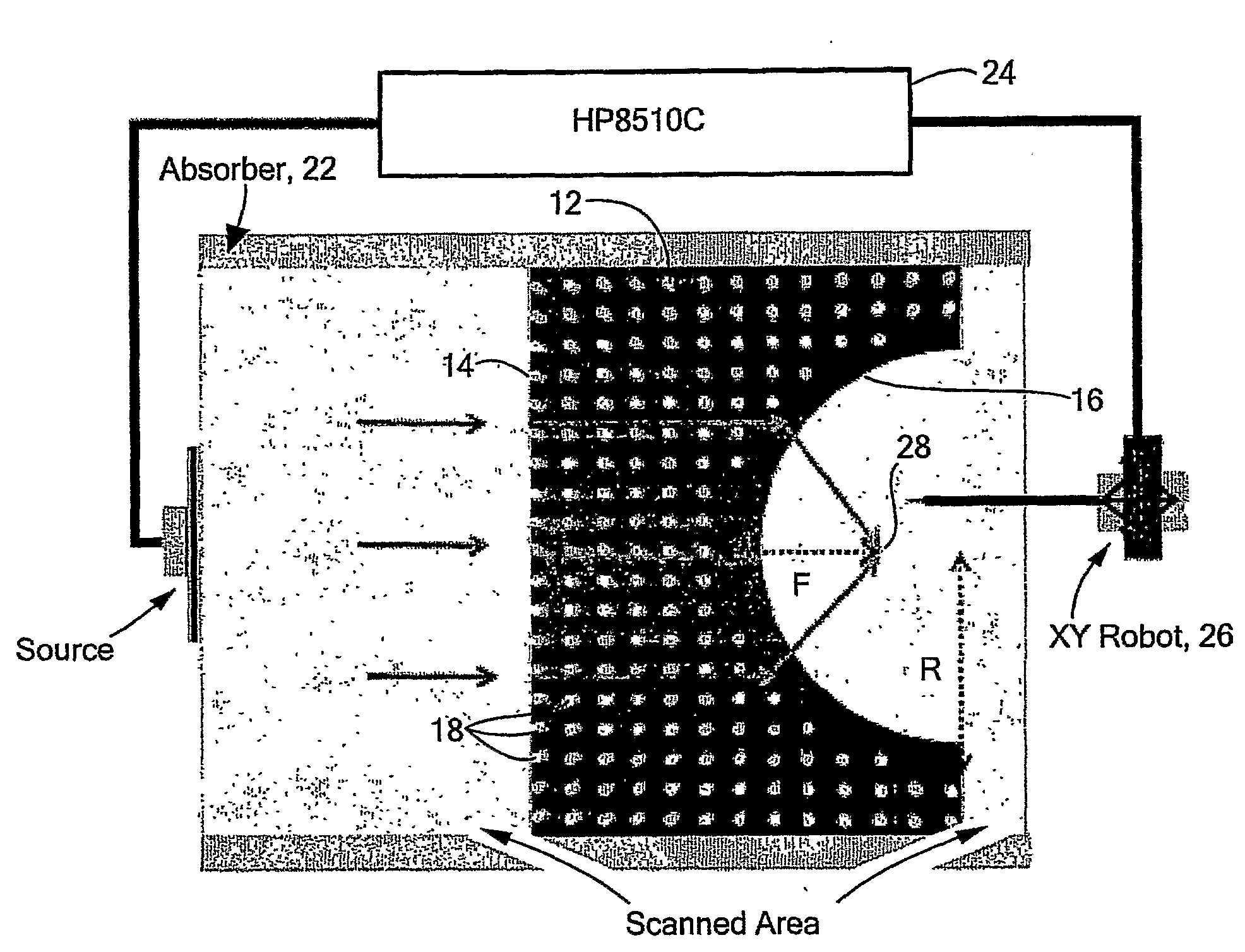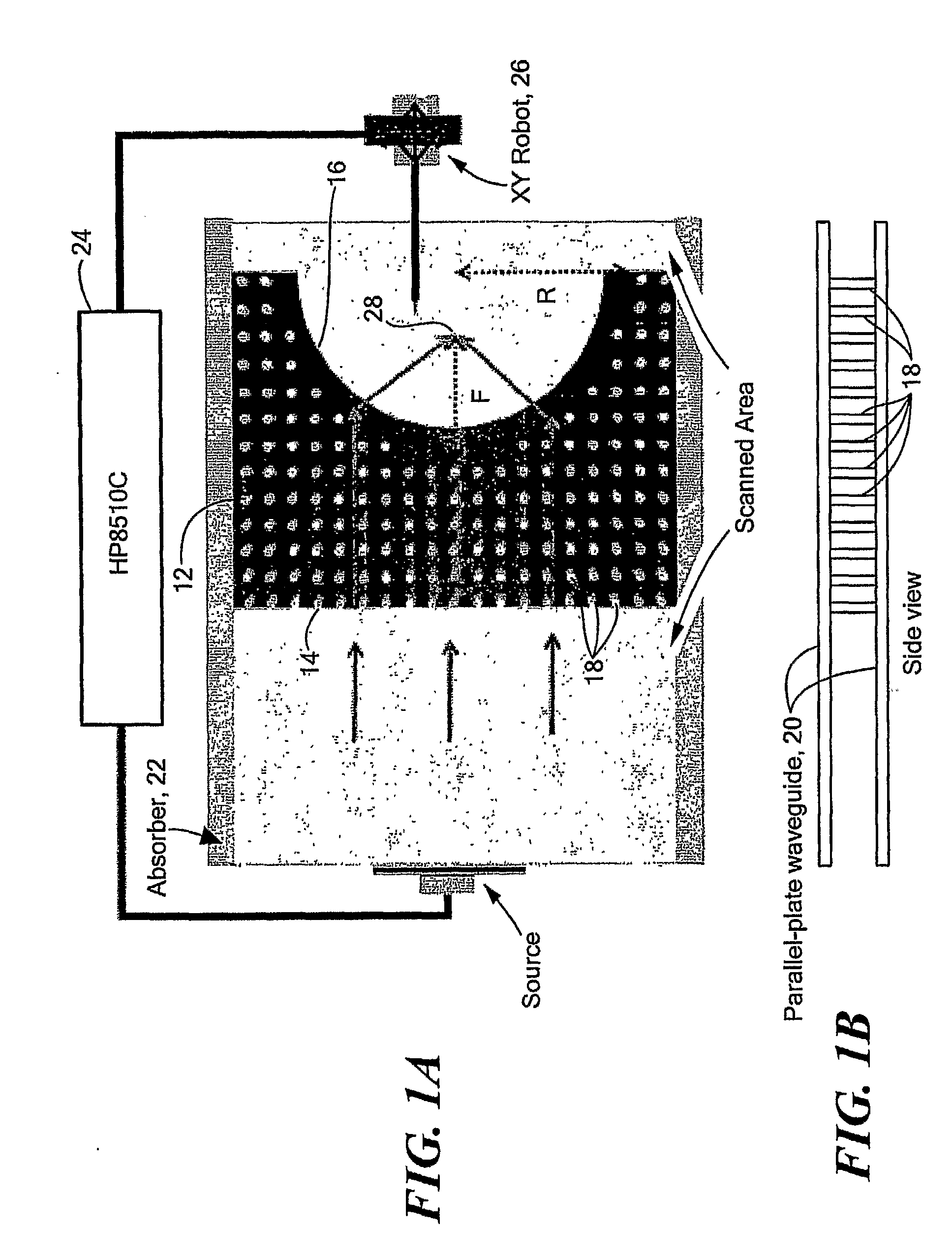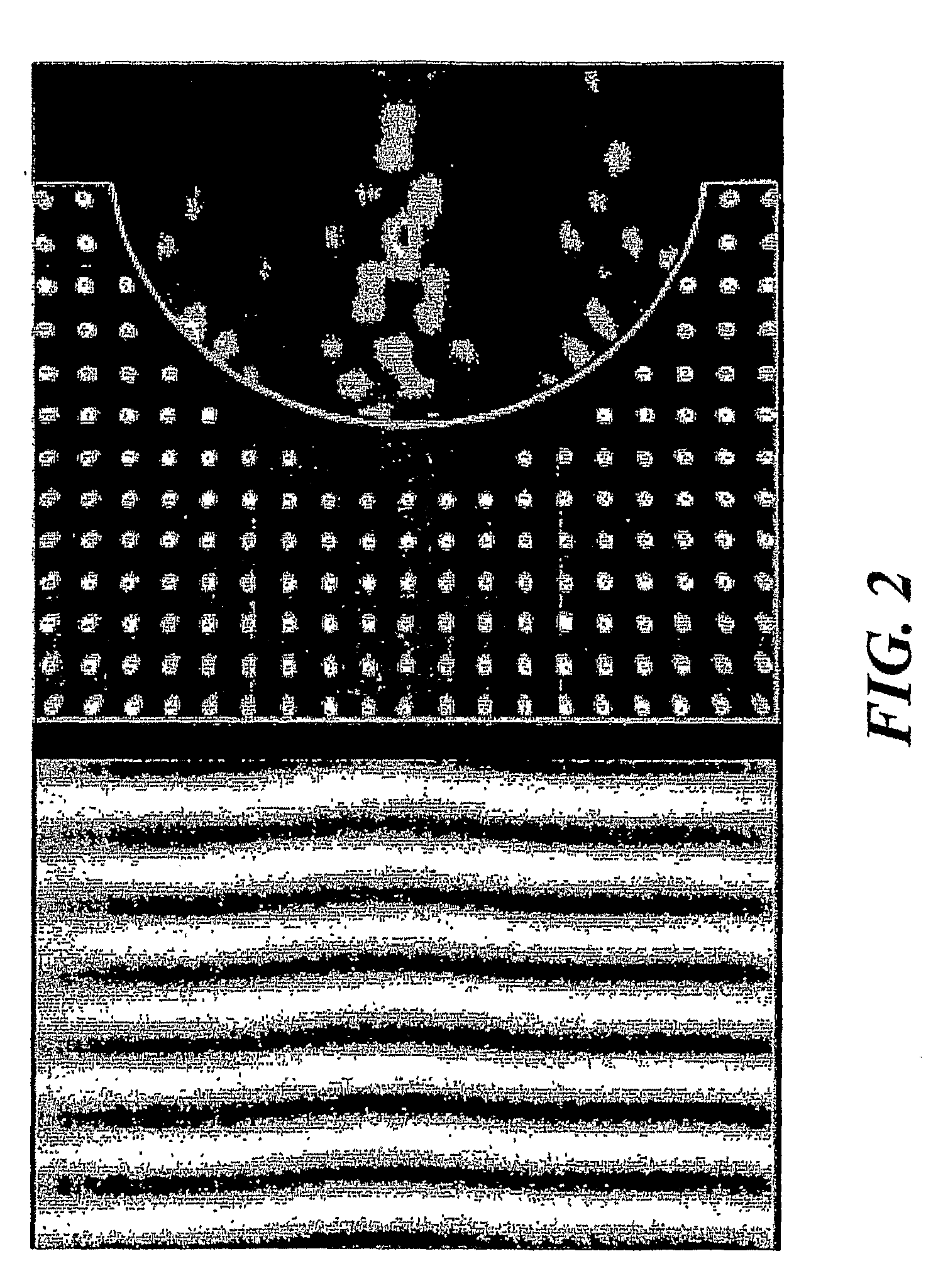Photonic Crystal Devices Using Negative Refraction
a technology of negative refraction and crystal devices, which is applied in the direction of lenses, instruments, optical elements, etc., can solve the problems of restricting the application of this type of material and high loss expected
- Summary
- Abstract
- Description
- Claims
- Application Information
AI Technical Summary
Benefits of technology
Problems solved by technology
Method used
Image
Examples
Embodiment Construction
[0026]The present invention relates to a dielectric photonic crystal having a negative refractive index used for focusing of electromagnetic radiation. Referring to FIGS. 1A and 1B, a plano-concave lens 10 is formed from a dielectric photonic crystal 12. The lens includes one planar face 14 and one concavely curved circular face 16. The lens is comprised of a two-dimensional periodic array of rods 18 of a suitable material, such as alumina or silicon, arranged in a square lattice in a medium such as air. A waveguide 20 directs electromagnetic radiation toward the planar face. The lens can be used with any frequency of electromagnetic radiation; it is particularly useful with microwave or optical frequencies. Alumina is a suitable material for microwave frequencies; silicon is a suitable material for optical frequencies. Other materials with high dielectric constant and low loss can also be used to fabricate the photonic crystals. An absorber 22 is used to form a microwave beam. A ne...
PUM
 Login to View More
Login to View More Abstract
Description
Claims
Application Information
 Login to View More
Login to View More - R&D
- Intellectual Property
- Life Sciences
- Materials
- Tech Scout
- Unparalleled Data Quality
- Higher Quality Content
- 60% Fewer Hallucinations
Browse by: Latest US Patents, China's latest patents, Technical Efficacy Thesaurus, Application Domain, Technology Topic, Popular Technical Reports.
© 2025 PatSnap. All rights reserved.Legal|Privacy policy|Modern Slavery Act Transparency Statement|Sitemap|About US| Contact US: help@patsnap.com



